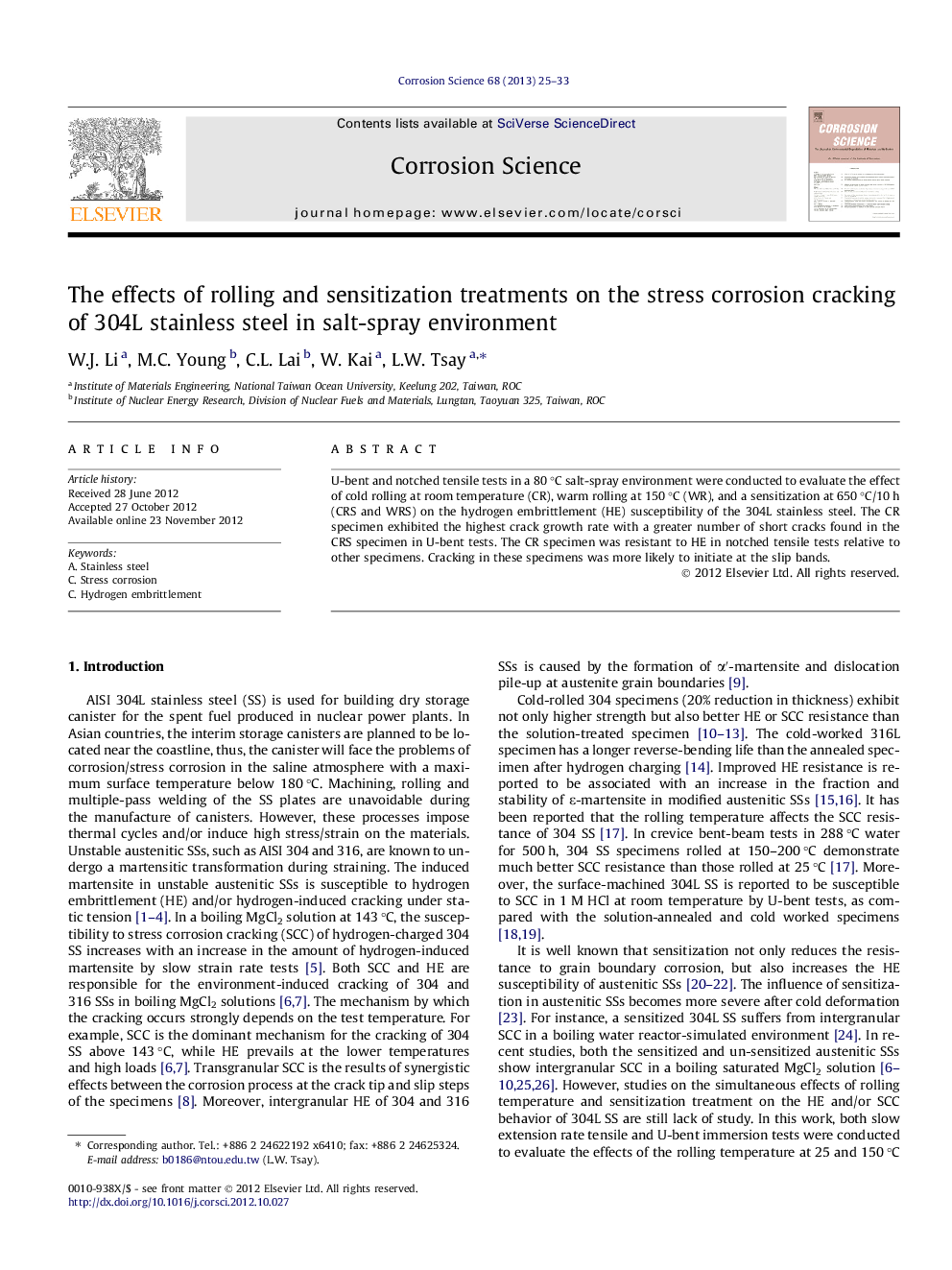| کد مقاله | کد نشریه | سال انتشار | مقاله انگلیسی | نسخه تمام متن |
|---|---|---|---|---|
| 1469284 | 1510027 | 2013 | 9 صفحه PDF | دانلود رایگان |

U-bent and notched tensile tests in a 80 °C salt-spray environment were conducted to evaluate the effect of cold rolling at room temperature (CR), warm rolling at 150 °C (WR), and a sensitization at 650 °C/10 h (CRS and WRS) on the hydrogen embrittlement (HE) susceptibility of the 304L stainless steel. The CR specimen exhibited the highest crack growth rate with a greater number of short cracks found in the CRS specimen in U-bent tests. The CR specimen was resistant to HE in notched tensile tests relative to other specimens. Cracking in these specimens was more likely to initiate at the slip bands.
► U-bent and notched tensile tests at 80 °C in a salt-spray environment were performed.
► CR specimen shows the highest crack growth rate in U-bent tests.
► The CR specimen is resistant to hydrogen embrittlement in notched tensile tests.
► Sensitization increases the hydrogen embrittlement susceptibility of the specimens.
► Cracking is more likely to initiate at the slip bands and shows stepwise crack.
Journal: Corrosion Science - Volume 68, March 2013, Pages 25–33